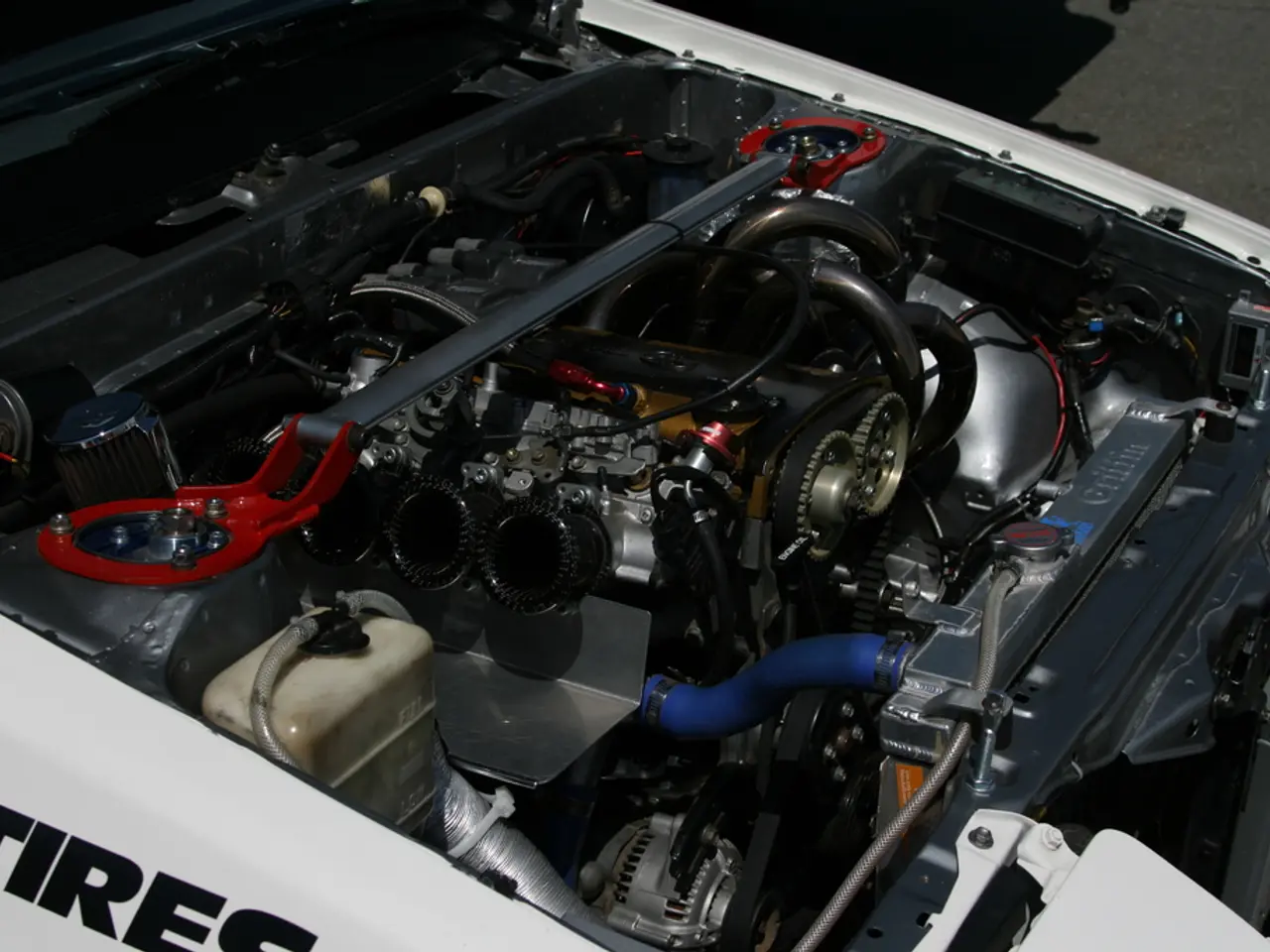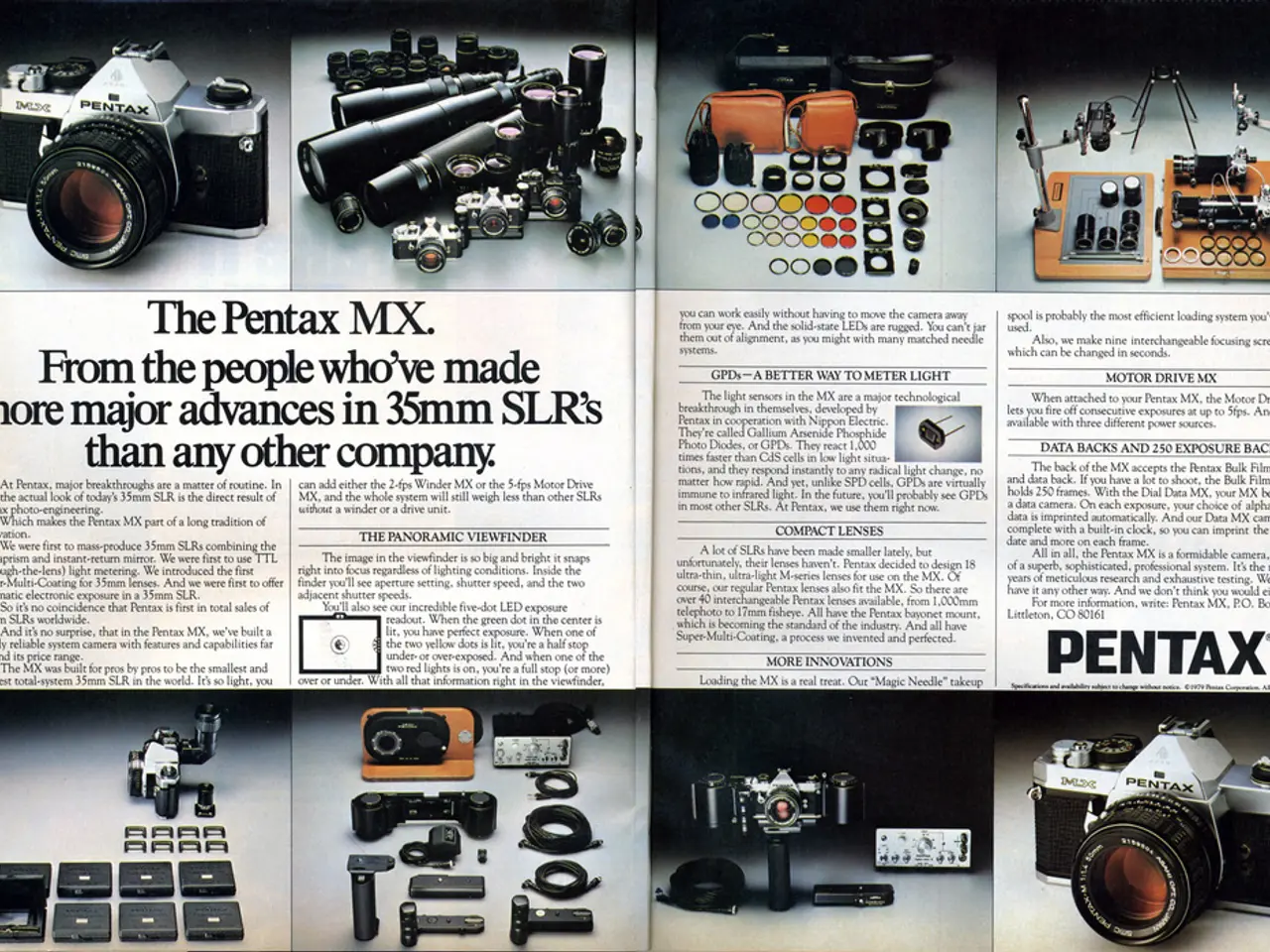Innovative German Battery Film: Enhancing Electric Vehicles' Power and Safety
A groundbreaking innovation in battery technology is making waves in the automotive industry, as German researchers at Fraunhofer FEP develop a new method for producing metal-polymer current collectors for lithium-ion batteries. This development, which replaces traditional thick metal foil current collectors with ultra-thin metal coatings on polymer films, promises to significantly improve the safety, energy density, and efficiency of lithium-ion batteries in electric vehicles.
The new production process, which employs a roll-to-roll technique and precise electron beam evaporation, deposits double-sided coatings of both copper and aluminum on polymer films, with each layer measuring up to 1 μm thick. This seemingly small change brings huge advantages, including reducing the weight of the current collector, leading to higher energy density in the battery cell.
One of the most significant benefits of this new technology is its potential to enhance safety. The polymer substrate of the new collectors melts instantly when a short circuit occurs, interrupting the current path and preventing heat from building up, which could potentially prevent dangerous overheating and potential fires.
The new metal-polymer current collectors could play a key role in preventing lithium-ion battery fires in electric vehicles, acting as an internal safety mechanism. They may also contribute to improved thermal management, as thinner, lighter materials can dissipate heat more effectively.
Moreover, this technology enables the production of lighter batteries, extending vehicle range and overall performance, which is crucial for electric vehicles. The polymer films, combined with the ultra-thin metal layers, deliver a strong mechanical and electrical interface while enabling advanced, industrial-scale roll-to-roll manufacturing that supports high throughput and cost efficiency.
In tests, the cells with metal-on-polymer current collectors performed similarly to the reference cells in terms of performance and cycle stability at different charging and discharging rates. This indicates that the new collectors maintain or even improve electrical conductivity and structural integrity, while significantly reducing metal usage.
This innovation is particularly timely as electric vehicles become more common, and the demand for safer, more efficient batteries continues to grow. The development of these new collectors could pave the way for longer-lasting devices or longer-range electric vehicles, making them a promising solution for the future of sustainable transportation.
- The groundbreaking innovation in battery technology, which employs science in the development of metal-polymer current collectors, promises to revolutionize the safety, energy density, and efficiency of lithium-ion batteries in the automotive industry, particularly in electric vehicles.
- The new roll-to-roll production process, which utilizes precise electron beam evaporation to deposit double-sided coatings of copper and aluminum on polymer films, contributes to improved safety and thermal management in lithium-ion batteries.
- The use of lighter and thinner metal-polymer current collectors, produced through technology and finance investments, can potentially prevent lithium-ion battery fires in electric vehicles and extend vehicle range and overall performance.
- As demand for safer, more efficient batteries increases with the proliferation of electric vehicles, the innovation in metal-polymer current collectors could pave the way for long-lasting devices or longer-range electric vehicles, making a significant impact on the future of sustainable transportation and the energy sector.




